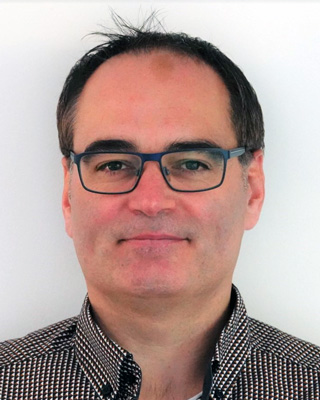Home > On-Demand Archives > Q&A Sessions >
Live Q&A - The Quest for the Perfect Asynchronous Sample Rate Converter
Wessel Lubberhuizen - Watch Now - DSP Online Conference 2022 - Duration: 02:58:50

Live Q&A - The Quest for the Perfect Asynchronous Sample Rate Converter
Wessel Lubberhuizen
Live Q&A with Wessel Lubberhuizen for the talk titled The Quest for the Perfect Asynchronous Sample Rate Converter
gretzteam
Score: 0 | 3 years ago | 1 reply
wesselSpeaker
Score: 0 | 3 years ago | no reply
Thanks!
- Yes, that is correct. However, it is possible to increase the stopband attenuation to ~200 dB by running the last output lowpass filter without decimation, e.g. 192 kHz input and 192 kHz output.
- In this case you can skip part of the decimation chain. You still need some decimation, otherwise you will get droop from the transposed farrow response, because it has zeros are at multiples of the output sample rate. But you can skip last output lowpass filter if you are happy with 100 dB image suppression.
napierm
Score: 0 | 3 years ago | no reply
This post has been deleted by the author
wesselSpeaker
Score: 0 | 3 years ago | no reply
I have used scripts from this website to compute coefficients for the polyphase IIR up/downsampling filters:
http://vadkudr.org/Algorithms/EMQFdemo/EMQFdemo.html
The scripts can be downloaded from this link:
http://vadkudr.org/Algorithms/EMQFdemo/EMQF.zip
10:04:48 From Rob Dye : The MATLAB scripts would be interesting 10:04:52 From Michael Kirkhart : Examples would be cool 10:10:43 From Radu Pralea : If you have any reference (literature) for this kind of three-PLL-based ASRC, please share 10:11:26 From mnapier : The interpolators I've seen are evaluated by plotting the magnitude and delay performance WRT the input spectrum. So the input factor phi(or mu) is incremented from 0 to 10:18:36 From Michael Kirkhart : I cannot see your screen 10:20:35 From Michael Kirkhart : I believe this is the link for EMQF filters: http://vadkudr.org/Algorithms/EMQFdemo/EMQFdemo.html 10:25:11 From mnapier : Where is the MATLAB code? 10:25:27 From mnapier : Yes. 10:25:43 From wessel.lubberhuizen : http://vadkudr.org/Algorithms/EMQFdemo/ 10:26:00 From Radu Pralea : If you have any reference (literature) for this kind of three-PLL-based ASRC, please share 10:26:25 From mnapier : Thank you for the presentation! 10:26:48 From JohnP : Thank you for your presentation. 10:27:03 From Rob Dye : Thanks for the presentation and Q&A


Fantastic presentation thanks lot.
Two questions...